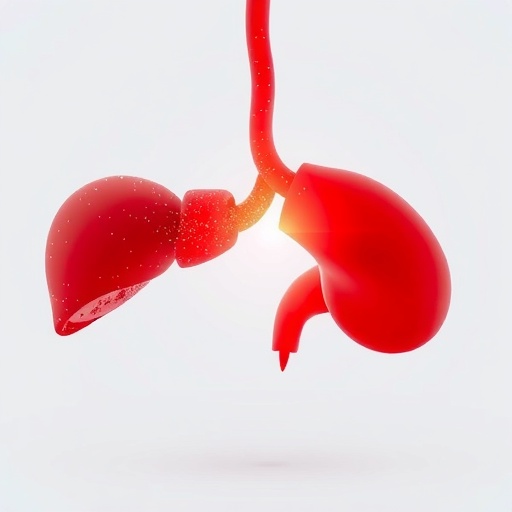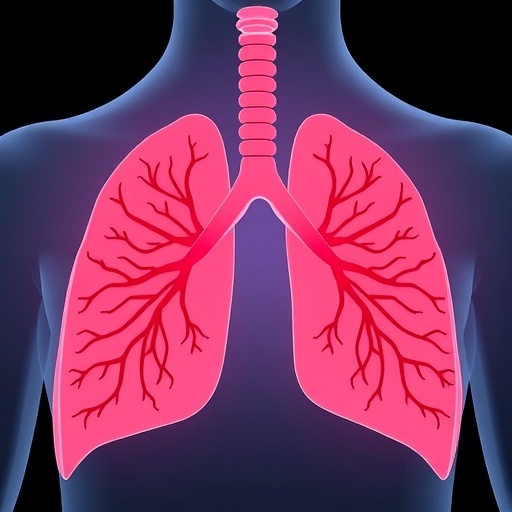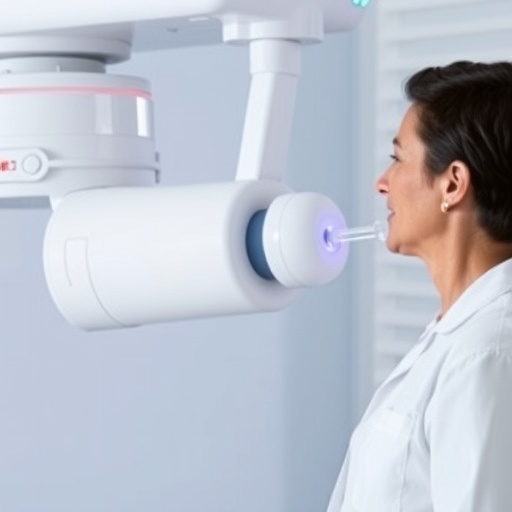Glypican-3 (GPC3) has emerged as one of the most promising targets in the fight against hepatocellular carcinoma (HCC), a highly aggressive form of liver cancer that accounts for a significant global health burden. This cell surface proteoglycan is uniquely overexpressed in more than 70% of HCC cases, distinguishing malignant cells from normal liver tissue with remarkable specificity. Over the past decade, researchers and clinicians worldwide have focused immense efforts on leveraging GPC3 for both therapeutic and diagnostic purposes, propelling it to the forefront of liver cancer precision medicine.
Despite the substantial progress, a critical challenge persists: approximately 10% to 30% of HCC patients display low or undetectable levels of GPC3 on tumor cells. This variability poses a formidable obstacle to the implementation of GPC3-targeted therapies across the entire patient population. Consequently, pre-treatment evaluation of GPC3 expression has become a clinical imperative. Ensuring that patients selected for GPC3-directed interventions express adequate levels of the antigen enhances the likelihood of therapeutic success while sparing others from ineffective treatments.
At a molecular level, GPC3 functions as a glycosylphosphatidylinositol (GPI)-anchored membrane protein cleaved into distinctive N- and C-terminal domains. Its transcriptional regulation involves key oncogenic drivers, including c-Myc and ZHX2, as well as a network of microRNAs that modulate expression dynamically during disease progression. Mechanistically, GPC3 amplifies oncogenic Wnt/β-catenin signaling, a pivotal pathway that promotes cellular proliferation and tumor growth. Furthermore, GPC3 facilitates metastatic potential by engaging with growth factors such as hepatocyte growth factor (HGF) and fibroblast growth factor (FGF), activating critical cascades including MAPK and PI3K/AKT, which underpin epithelial-mesenchymal transition (EMT) and cancer cell invasion.
Adding further complexity to its pathological role, GPC3 profoundly impacts the tumor microenvironment by modulating immune cell infiltration and polarization. It actively recruits tumor-associated macrophages and skews them toward the M2 phenotype, which is associated with immune suppression and enhanced tumor progression. Notably, GPC3’s expression profile is frequently more sensitive than the conventional biomarker alpha-fetoprotein (AFP), especially in early-stage and AFP-negative HCC cases, underscoring its indispensable role in diagnostics and prognosis.
The clinical translation of GPC3-targeted immunotherapies has generated much enthusiasm and robust investigative activity. These strategies broadly fall into two categories: non-cellular and cellular therapeutics. Non-cellular approaches have encompassed monoclonal antibodies like GC33 and codrituzumab, which initially demonstrated safety but limited clinical efficacy. Internally driven efforts have led to the development of more sophisticated bispecific antibodies (e.g., ERY974, CW350) designed to bridge tumor cells and T lymphocytes, thereby enhancing targeted cytotoxicity. The therapeutic repertoire also includes peptide vaccines, antibody-drug conjugates (ADCs), and innovative mRNA-based constructs—all aiming to maximize tumor eradication while minimizing off-target toxicity.
On the cellular therapy front, GPC3-directed Chimeric Antigen Receptor T-cell (CAR-T) therapy stands out as a revolutionary modality. Early-stage clinical trials, such as the NCT02395250 phase I study, have revealed encouraging signs of antitumor activity alongside acceptable safety profiles. Notwithstanding, the immunosuppressive solid tumor milieu in HCC demands next-generation improvements. Thus, researchers engineer “armored” CAR-T cells capable of secreting cytokines like IL-15 and IL-21 to bolster their persistence and functionality. Gene editing techniques are in exploration to knock out immune checkpoint molecules like PD-1, further enhancing T-cell efficacy. Moreover, the pursuit of “off-the-shelf” universal products, including CAR-Natural Killer (NK) and CAR-γδ T cells, signals a future where manufacturing barriers might be circumvented.
Identifying patients suitable for GPC3-targeted treatments hinges on precise, reliable detection of antigen expression. Immunohistochemistry (IHC) remains the clinical gold standard, allowing direct visualization of GPC3 in tumor biopsies, yielding invaluable spatial and contextual information. Complementary to IHC, serum-based Enzyme-Linked Immunosorbent Assays (ELISA) afford high-throughput quantification of circulating soluble GPC3, aiding routine screening and disease monitoring with notable specificity and sensitivity—particularly in distinguishing HCC from cirrhotic or benign liver conditions.
Flow cytometry, another powerful technique, enables the detection of GPC3-expressing circulating tumor cells, offering enhanced sensitivity and the opportunity for dynamic monitoring, while advanced imaging modalities, namely Magnetic Resonance Imaging (MRI) augmented with radiomics and immuno-positron emission tomography (immuno-PET) using radiolabeled anti-GPC3 antibodies, provide non-invasive, whole-body assessments of antigen expression distribution. These imaging approaches overcome the challenges posed by intratumor heterogeneity and real-time assessment of therapeutic targets.
Pushing the boundaries further, biosensor technologies are emerging as transformative tools for GPC3 detection. Utilizing aptamer-based electrochemical and fluorescence sensors, these devices boast ultra-low detection limits—down to picogram per milliliter levels—rapid assay times, and minimal sample requirements. While currently in the developmental and validation phase, biosensors hold notable promise for point-of-care applications, early diagnosis, and continuous monitoring with high sensitivity and specificity.
While significant achievements characterize the field, hurdles remain in fully harnessing the potential of GPC3. A comprehensive understanding of the biological interplay between membrane-bound and soluble GPC3 forms over the course of tumor evolution is still incomplete. Standardization of novel detection modalities, particularly biosensors, is critical before their widespread clinical adoption. Imaging approaches, although non-invasive, face challenges related to radioisotope handling and the complicated landscape of antigen heterogeneity within multifocal liver tumors.
Precision medicine approaches integrating multiple diagnostic platforms and therapeutic modalities are key to advancing GPC3-guided management of liver cancer. For early-stage HCC patients, combinatorial assessment of serum and tissue GPC3 levels enables accurate stratification and timely initiation of targeted therapies, potentially improving prognostic outcomes. Conversely, advanced-stage patients benefit from integrative regimens that combine sensitive serum assays and sophisticated imaging to map the extent and heterogeneity of GPC3 expression comprehensively.
Looking forward, the future of HCC treatment may well rely on optimizing therapeutic timing based on dynamic monitoring of GPC3 with biosensors and imaging, coupled with next-generation therapeutics that overcome immune evasion and tumor microenvironment immunosuppression. Continuous refinement of antibody designs, chimeric antigen receptors, and combinational immunotherapy regimens promises to enhance efficacy, durability, and patient quality of life.
In conclusion, GPC3 exemplifies the power and challenges of a theranostic target in hepatocellular carcinoma. Harnessing its full potential demands a multidisciplinary effort encompassing molecular biology, immunology, bioengineering, and clinical innovation. By uniting cutting-edge detection technologies and tailored immunotherapy, the oncology community moves closer to realizing the vision of precision medicine that markedly transforms liver cancer outcomes worldwide.
Subject of Research: Glypican-3 Targeting in Hepatocellular Carcinoma (Liver Cancer) Therapy and Diagnostics
Article Title: Targeting Glypican-3 for Liver Cancer Therapy: Clinical Applications and Detection Methods
News Publication Date: 7-Aug-2025
Web References:
Journal of Clinical and Translational Hepatology
DOI: 10.14218/JCTH.2025.00099
Image Credits: Chuang Wang
Keywords: Liver cancer, Hepatocellular carcinoma, Immunotherapy, Glypican-3, Targeted therapy, CAR-T cells, Biomarkers, Diagnostic methods, ELISA, Immunohistochemistry, Biosensors, Imaging
Tags: cancer biomarker researchchallenges in liver cancer treatmentdiagnostic approaches for HCCglypican-3 targeted treatmentGPC3 expression variabilityhepatocellular carcinoma advancementsliver cancer therapymolecular mechanisms of GPC3oncology and glycosylphosphatidylinositol proteinspre-treatment evaluation in cancer therapyprecision medicine in liver cancertherapeutic success in liver cancer





